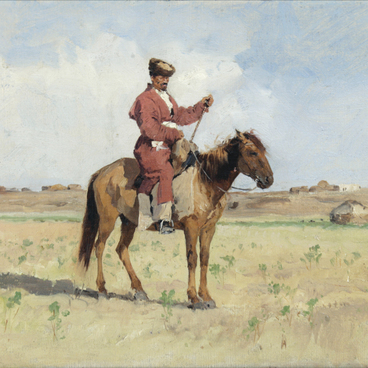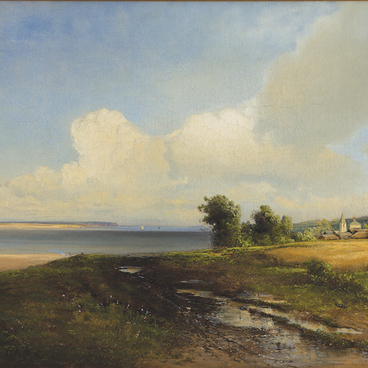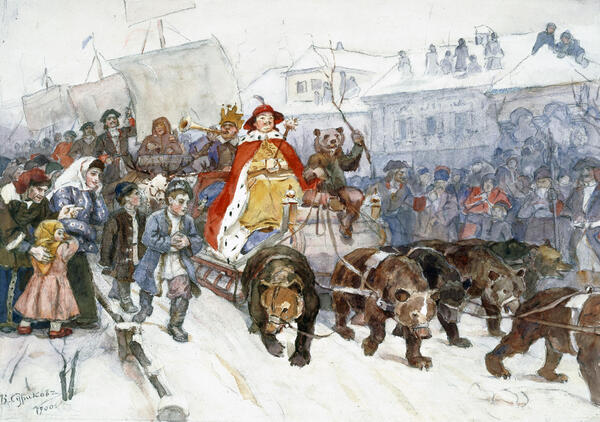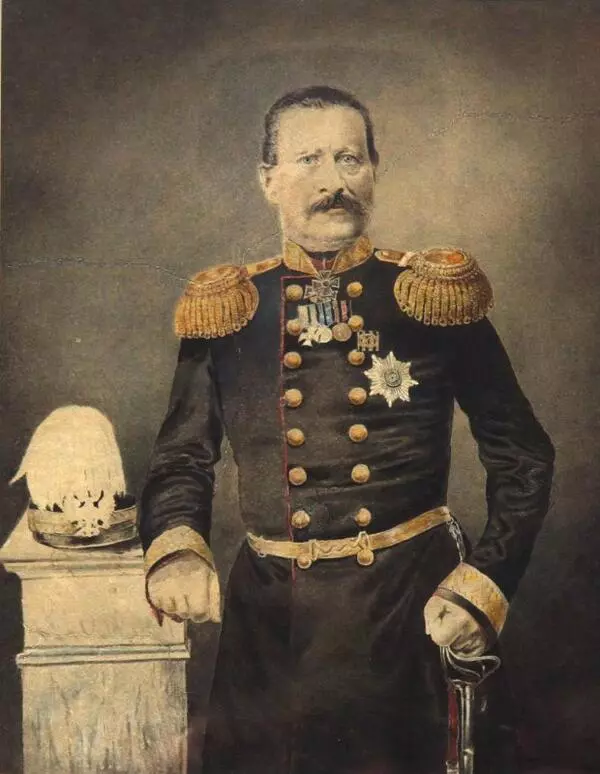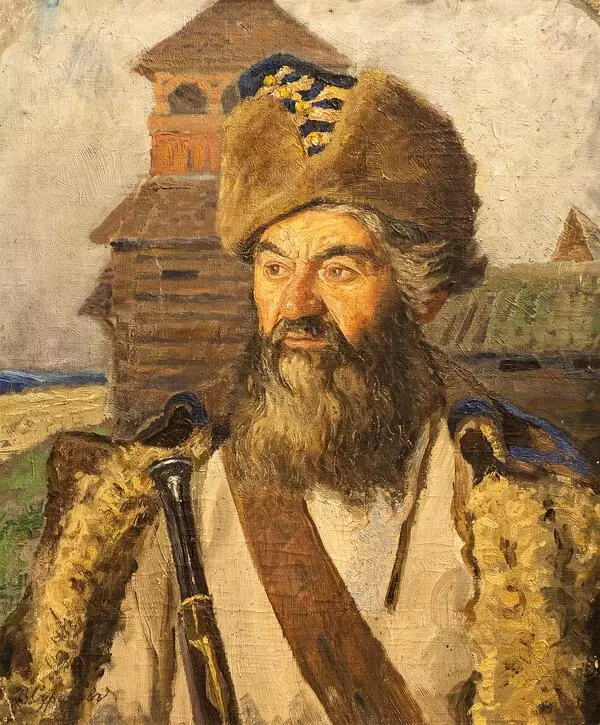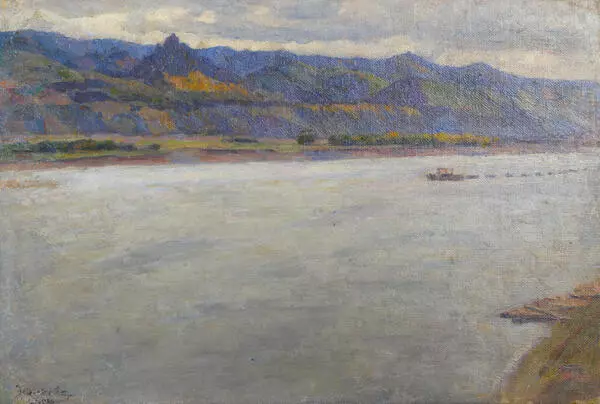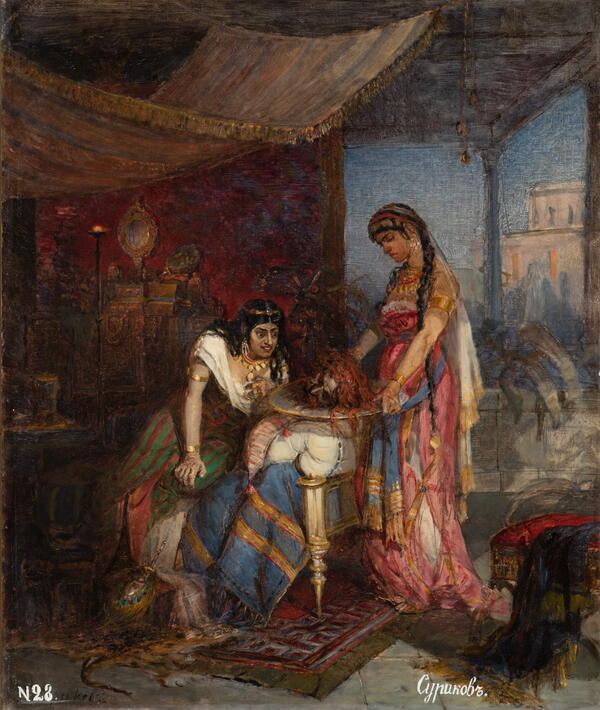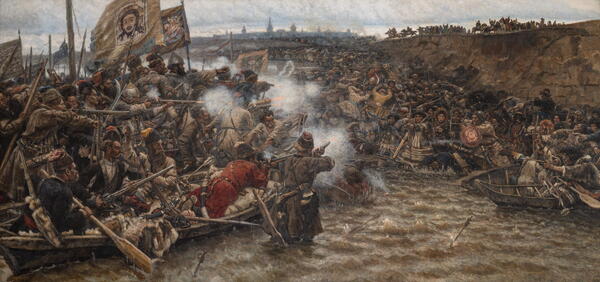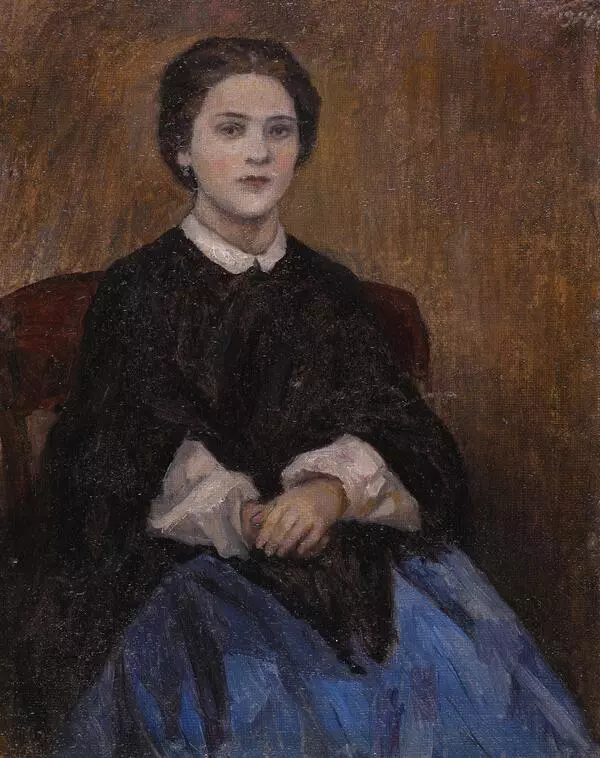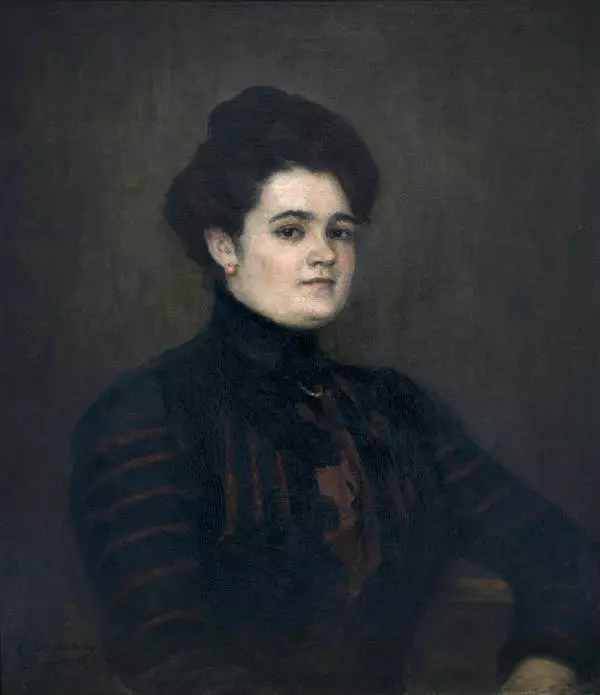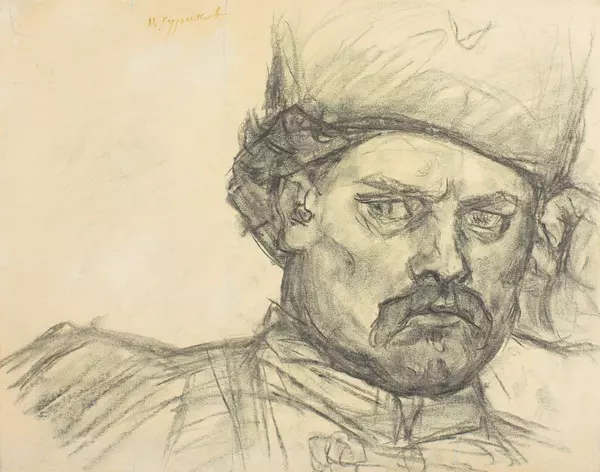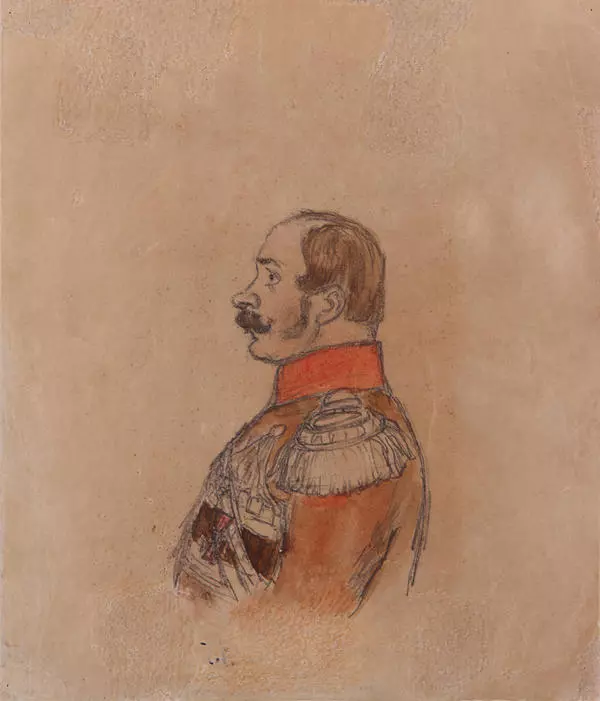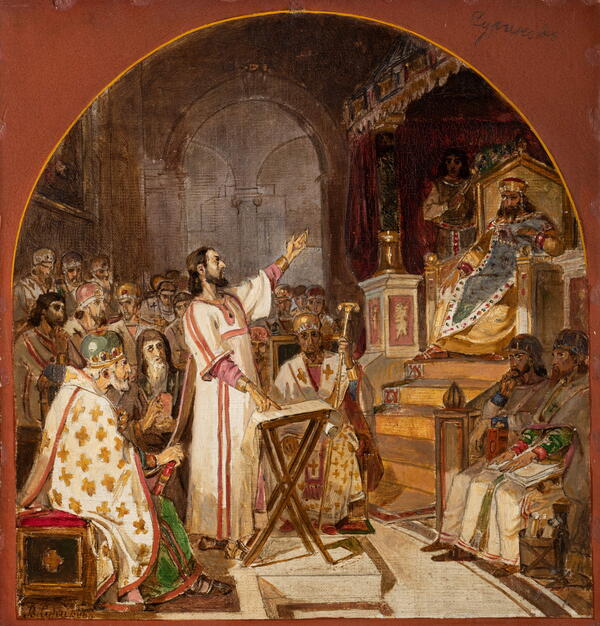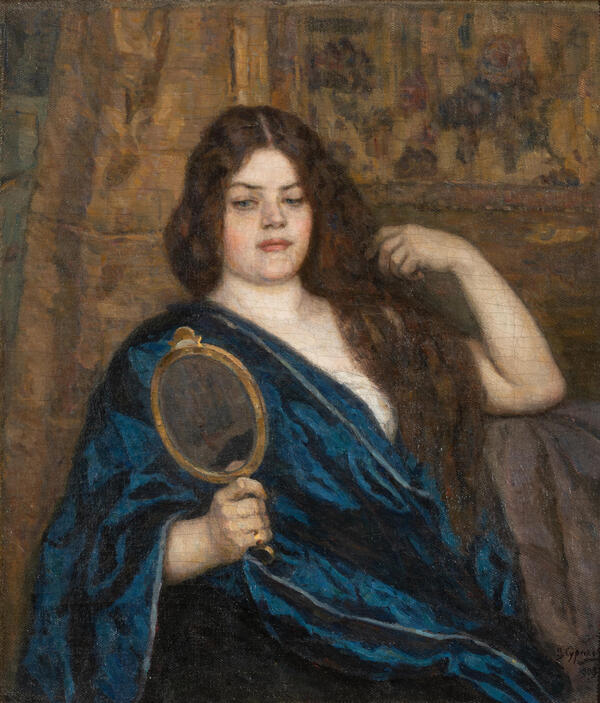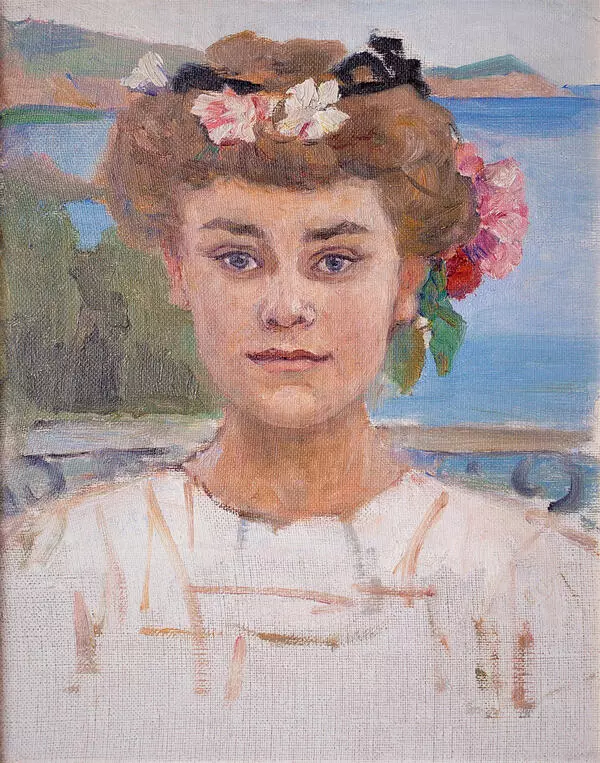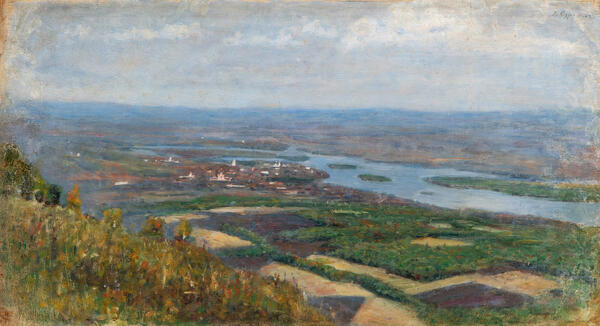Vasily Surikov was born January 12, 1848 in Krasnoyarsk to a Cossack family. His grand uncle, Alexander Surikov was the chieftain of the Yenisei Cossack Host.
Surikov started drawing in early childhood. His first teacher was Nicolay Grebnev who taught drawing in the Krasnoyarsk provincial vocational school. One of the artist’s earliest paintings is a watercolor, Rafts on Yenisei. The Surikov family was poor and could not support the boy through gymnasium, so he took a job of a scribe in the provincial administration. That is where the Yenisei Governor Zamyatin saw his drawings and found a sponsor who paid for the youth’s tuition in the Academy of Arts. However, it took some time for him to qualify for admission to the Academy. First he studied at the St. Petersburg drawing school, then audited classes in the Academy, and became a full-time student as late as 1870. He graduated in 1875 with a title of 1st degree class artist.
In 1877, Surikov moved to Moscow having received a commission for four frescoes in the Christ the Savior Chapel. He lived in rented apartments, worked, and returned to Krasnoyarsk for the summer seasons.
In 188, he painted The Morning of the Streltsy Execution, which became talk of the town. In 1883, Pavel Tretyakov bought Menshikov in Beryozovo for his collection for a sum that allowed him to take a European tour. He visited the Louvre and Dresden Art Galleris, toured Italy, Austria, and France.
In about the same year Surikov came up with the idea of Boyarina Morozova, which is evidenced by his first sketch, which differs from the finished work by the background with the Kremlin wall far behind. Later, the pencil sketch was stretched longitudinally and complemented with a number of human figures. It took Surikov several years to find the faces he needed. The most challenging task was to find a face for Boyarina Morozova herself. The artist used his aunt Avdotya Torgoshina as his model for Morozova. Her husband Stepan is the black bearded strelits (soldier) in the picture. The nun’s head from the study painted shortly before the completion of the large painting in 1887 is placed in the right-hand side of the composition.
Surikov started drawing in early childhood. His first teacher was Nicolay Grebnev who taught drawing in the Krasnoyarsk provincial vocational school. One of the artist’s earliest paintings is a watercolor, Rafts on Yenisei. The Surikov family was poor and could not support the boy through gymnasium, so he took a job of a scribe in the provincial administration. That is where the Yenisei Governor Zamyatin saw his drawings and found a sponsor who paid for the youth’s tuition in the Academy of Arts. However, it took some time for him to qualify for admission to the Academy. First he studied at the St. Petersburg drawing school, then audited classes in the Academy, and became a full-time student as late as 1870. He graduated in 1875 with a title of 1st degree class artist.
In 1877, Surikov moved to Moscow having received a commission for four frescoes in the Christ the Savior Chapel. He lived in rented apartments, worked, and returned to Krasnoyarsk for the summer seasons.
In 188, he painted The Morning of the Streltsy Execution, which became talk of the town. In 1883, Pavel Tretyakov bought Menshikov in Beryozovo for his collection for a sum that allowed him to take a European tour. He visited the Louvre and Dresden Art Galleris, toured Italy, Austria, and France.
In about the same year Surikov came up with the idea of Boyarina Morozova, which is evidenced by his first sketch, which differs from the finished work by the background with the Kremlin wall far behind. Later, the pencil sketch was stretched longitudinally and complemented with a number of human figures. It took Surikov several years to find the faces he needed. The most challenging task was to find a face for Boyarina Morozova herself. The artist used his aunt Avdotya Torgoshina as his model for Morozova. Her husband Stepan is the black bearded strelits (soldier) in the picture. The nun’s head from the study painted shortly before the completion of the large painting in 1887 is placed in the right-hand side of the composition.


